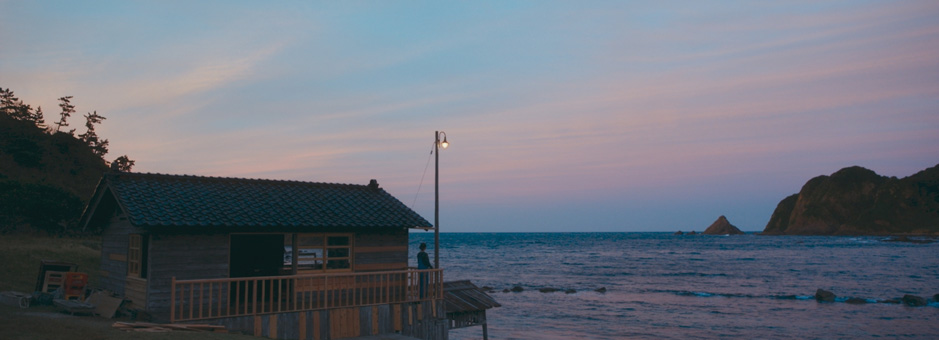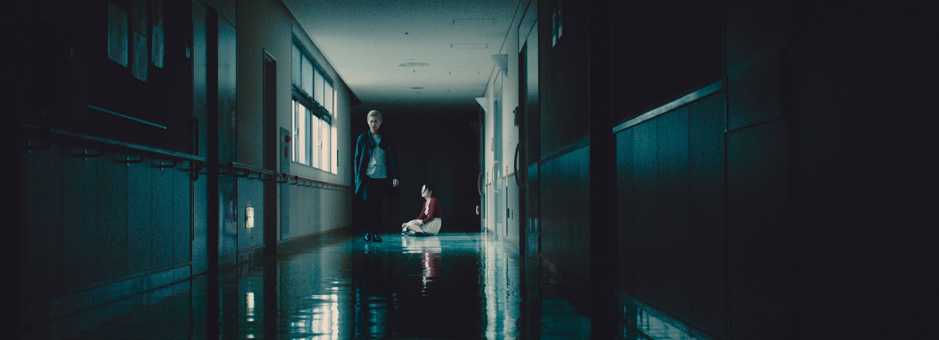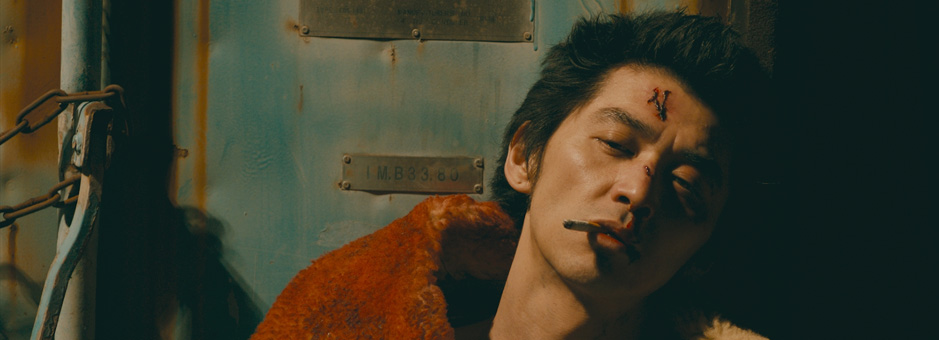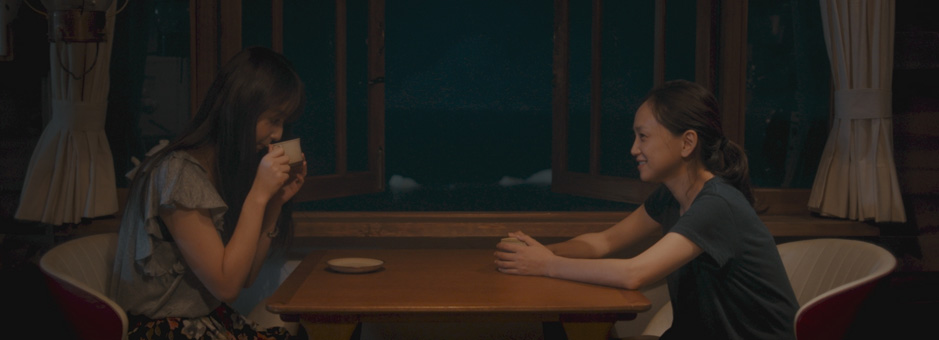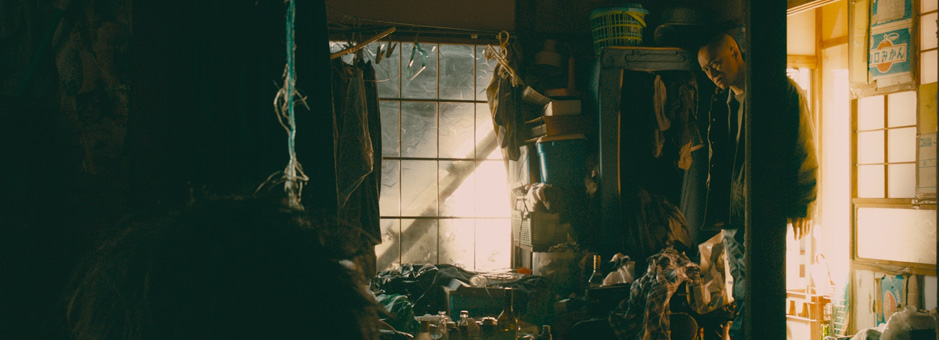Meet The Colourist
Soichi Satake
Senior Colourist, Toei Digital Lab
Toei Digital Lab is based in Tokyo and has three Baselight colour grading and finishing systems.
Soichi Satake moved to Toei Labo Tech (Toei Digital Lab's parent company) in 2005, where he was given the chance to learn his trade as the Japanese film industry shifted its workflow towards digital intermediate. Today, Soichi is Senior Colourist at Toei Digital Lab, where he specialises in DI for feature films such as Narratage, The Furthest End Awaits and Blazing Famiglia.
Can you give an introduction to Toei and Toei Digital Lab?
Toei as a company has distributed and produced feature films, TV content and animation since 1951. Toei has its own production departments and studios in Tokyo and Kyoto, which provide a wide range of service for films, TV shows and commercials.
Toei Digital Lab (TDL) is part of Toei Digital Centre in Toei Tokyo Studio, located in the West suburb of Tokyo. TDL was founded in 2010 and provides demanding digital post-production services such as DI, online finishing for TV content and sound services.
We have one Baselight X and two Baselight ONE systems in our facility. They are all connected via a cloud network in conjunction with FLUX Store to share projects. Baselight X is situated in our grading suite for feature film projects, and we also use it as a finishing station.
The colour grading session is not only about colour and enhancing images; we also modify edits and the credit roll, fix VFX shots and composite. We use the Baselight ONE systems for dailies, TV shows and video deliverables.
Of course there are many things that could be done better in VFX or other software, and when that is the case then I outsource these tasks. But I prefer to keep everything happening in Baselight as much as possible, so I can have control when clients require some tweaks on project.
Baselight handles complex editorial tasks really well, such as multiple split screens, variable speed change, or credit movements, so colourists can offer editorial operations within Baselight in order to finalise a project.
How did you make your start in colour?
I started my career as camera assistant on TV commercials and music videos in the early 2000s. As a camera assistant I used to attend the telecine sessions along with DoPs, and colourists always fascinated me, particularly how they were creating ‘looks’.
I joined Toei Labo Tech, which is TDL’s parent company, in 2005, and soon after I had joined the team I became an assistant to a colourist who was an ex-colour timer. I was lucky enough to learn from him - from film process to modern telecine at the same time - since he had a long experience in colour timing for theatrical films before he started to work as telecine colourist.
In my early stage as a colourist, I mainly worked on telecine for video deliverables and old classic films for digital remastering. As the Japanese film industry shifted its workflow towards digital intermediate, I was given a chance to learn and use the new digital colour grading system and I started to commit myself to DI colour grading.
You are specialised in feature films, what draws you to these projects?
On most of my projects, I initially go through the entire film to get balance and bring out the “look” in order to provide clients with a good starting point before they come in. Even things like facelift, vignette, and sky replacements are done beforehand if necessary. I think this helps clients focus more deeply on the story telling from the day one of the session.
This approach has helped to build good relationships with many of my clients so far.
Are some projects easier to colour than others?
I don't think there are any projects that are easy to colour in general. Plus each project has its distinctive story and tastes. The expectations from the cinematographers also vary - regardless of the budget. It’s always challenging to achieve their views. Or sometimes I see shots so perfect already, that I leave them as they came in.
What projects have you been working on recently?
I’m currently working on Isao Yukisada’s “Narratage”. It’s a film based on the novel by Rio Shimamoto. The DoP is Jun Fukumoto, who has a unique style of cinematography. This is my fourth film working with them and it has been very exciting.
What do your clients like most about what you can offer with Baselight?
I think they like the speed. I can provide a session without anyone having to wait for a long time to see the results in Baselight. Often I receive compliments on the grading speed. Baselight is powerful enough to handle complex tasks so quickly, such as sky replacement or facelift, which require blending layers with multiple shapes as well as tracking and keying.
Also viewing different shots side by side or even playing multiple scenes real-time simultaneously - this helps everyone to make fast decisions and sometimes even makes sessions entertaining.
What do you like most about Baselight?
I enjoy Baselight’s flexibility and its straightforward colour management.
Colour management is a significant part of the DI workflow and sometimes it can be very tricky. Baselight can handle any colour spaces, and its Colour Space Journey helps me to understand my current colour path, and keeps me on track. I think Truelight Colour Spaces is the best colour management system in the market, which can easily handle any comprehensive technical demands.
Along with the ergonomic toolset, Baselight is the only system that offers me satisfaction for both productivity and creativity at same time.
Could you describe how you handle complex grades with multiple layers?
For me, compositing is a very important aspect of colour grading. I often blend multiple stacks, mix them together and animate them if necessary, just as I would for compositing tasks such as sky replacements.
Baselight offers fine shape tools, but when the mask gets complicated I pass the rotoscoping tasks to our in-house roto artists and bring them into Baselight as an external matte. I often receive tonnes of external mattes in order to tweak every element of VFX shots. That’s when the Baselight stack gets piled up so high - sometimes it reaches nearly 100 layers.
I know a high-end DI system, which is only capable of handling around 20 cascades, even if the manufacturer claims that you can add unlimited numbers of layers…
But Baselight is really the only system that serves me this way and can handle 4K projects with multiple 4K inputs in one cut.
I’ve done a few HDR mastering projects over the past two years, and my very first HDR project was Sony’s BVM-X300 HDR reel in 4K 60P for NAB 2015. I used Baselight ONE for this project, which at 2h30m was a very long project indeed.
HDR technology expanded the potential capability of displays as well as creativity, but it’s just one of the deliverable options right now. Eventually HDR will take over completely from SDR displays, and probably we will be mastering everything using HDR displays.
I think that HDR in conjunction with HFR and VR creates a good chemistry. I can imagine that with all those technologies, you can create very realistic images that you see as it’s actually happening in front of you. Maybe it’s not cinematic enough for some stories, but I think it’s going to be very entertaining.
What advice would you give to people interested in becoming a colourist?
Be a good adviser to cinematographers. Listen to them very carefully to better understand their ideas and vision. Colourists have to know the tools they are using very well and have the skills to translate creative ideas into images.
Always think about how to tell the story and take the audience on a journey. Expand your knowledge of art and science. Have some hobby, enjoy your life and learn everything you can.
Did a particular film inspire you along this path in entertainment?
I can’t think of one particular film, but I have definitely been influenced by films from Won Kar-wai, Luc Besson, Guy Ritchie, Quentin Tarantino and Tony Scott. I saw a lot of their movies when I was teenager.
Where do you find inspiration?
In photography and nature. Michael Kenna, Miller Mobley, and Daido Moriyama are my favourite photographers and I’m often inspired by their work.
Sometimes I just go out into the wild and spend some time off the grid – to see and feel nature blows my mind too.
Speed, creative toolset, and state of the art colour management.
What is your favorite part of the job?
Colour grading is a very interesting job overall, you have to be technologist and creator at the same time. Bringing out creative ideas into visible images, using all the techniques you’ve learned, is very satisfying.
Having to sit in the dark indoors with no windows for the entire day.
What do you do to de-stress from it all?
Spend time with my family and seeing my kids growing up definitely helps relieve some stress. I love commuting on a motorbike, breathing fresh air on the way back home.
To be honest, I don’t feel much stress from work. I just enjoy it very much.
Join In
If you want to participate in our MTC programme, we'd love to hear from you. Contact:
Alexa Maza
e: [email protected]
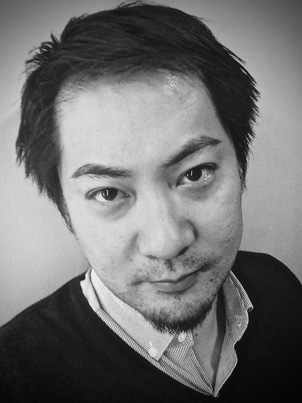
“Along with the ergonomic toolset, Baselight is the only system that offers me satisfaction for both productivity and creativity at same time.”
Details
Colourist: Soichi Satake
Role: Senior Colourist
w: Toei Digital Lab




